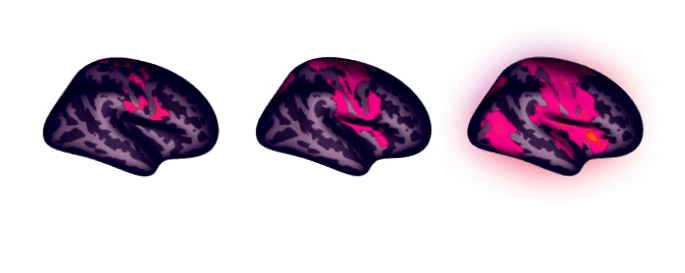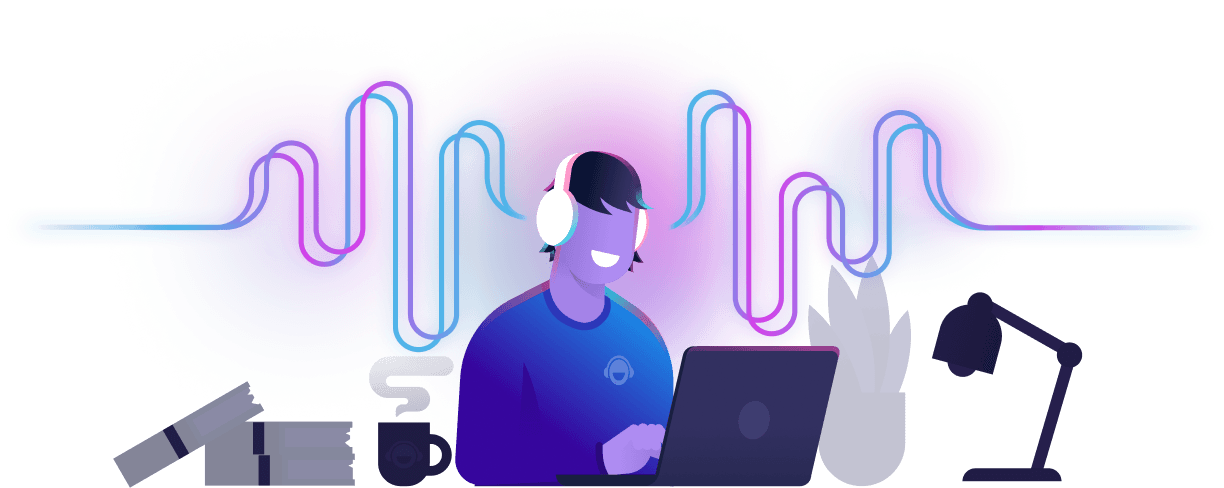

Science you can hear
Brain.fm contains patterns that shift your brain state with entrainment.
Our music sounds different—and affects you differently—than any other music.

How do we know Brain.fm works?
Performance testing with placebo controls
We test our music with simple ‘games’ used to measure focused attention in psychology research. Our experiments always include a control (‘placebo’) of the same music without Brain.fm technology, so we can be sure our tech is what makes the difference.

Electroencephalography measures fluctuations in electrical current at the scalp, showing rhythmic brain activity (‘brainwaves’) and how this kind of activity shifts in response to Brain.fm music.

Functional magnetic resonance imaging measures blood flow in the brain, showing which brain regions and functional networks are more active in response to Brain.fm versus other music.

What makes Brain.fm different?
Patented neural entrainment
Brain.fm holds patents on technology to elicit strong neural phase locking—allowing populations of neurons to engage in various kinds of coordinated activity. This makes our music unique, purpose-built to steer you into a desired mental state.

Most music in the world is designed to grab your attention, which leads to distraction. Instead, our process ensures that attention-grabbing elements are subdued or removed, allowing the music to sit comfortably in the background.
Binaural beats produce weak neural synchrony while modulation directly in each stereo channel (used by Brain.fm) has much stronger effects on brain activity. Importantly, Brain.fm uses many methods to make our music work, unlike binaural beats which is just one technique!
How is Brain.fm music made?
Made with science,
tested with science.
We use neuroscience to inform our music-making, but also use science to test the resulting music. These are two different roles of science at Brain.fm, setting us apart from any other music service.

Music made purely by AI is often cold and boring, while human music targets your emotions, but lacks the precise features needed to affect your brain directly. Brain.fm gives you the best of both worlds by adding a layer of science to human-composed music.
Our science-based process results in music with a unique sound that has unique effects on your brain and performance, unlike services that just curate pre-existing music that wasn’t originally meant for that purpose.
Brain.fm’s research and methods
Read our science

Woods, KJP., Sampaio, G.,, James, T., Przysinda, E., Spencer, A.,Hewett, A., Spencer, A., Morillon, B., & Loui, P. (2024)

Woods, KJP., Hewett, A., Spencer, A., Morillon, B., & Loui, P. (2019)

Woods, KJP., et al. (2018)

research about some of the methods we use
Supporting literature

Calderone, D. J., Lakatos, P., Butler, P. D. & Xavier Castellanos, F. (2014)

Geen, R. G. (1984)

Furnham, A. & Bradley, A. (1997)

Strauß, M. et al. (2018)

Loo, S. K. et al. (2009)

Lee, J. H., Whittington, M. A. & Kopell, N. J. (2013)

Your most productive day starts now.
Our science-first approach creates music that sounds different and affects your brain differently than any other music.







